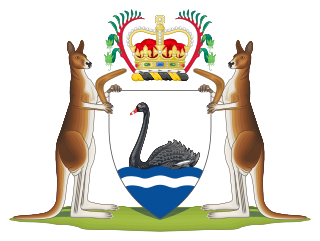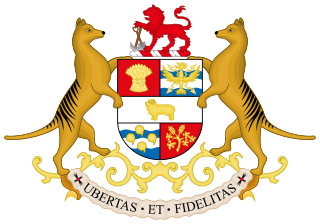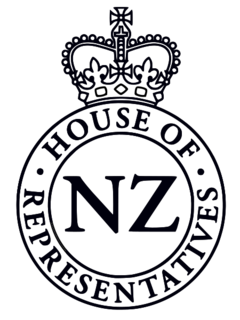Related Research Articles

The Westminster system or Westminster model is a type of parliamentary government that incorporates a series of procedures for operating a legislature. This concept was first developed in England.

The House of Representatives is the lower house of the bicameral Parliament of Australia, the upper house being the Senate. Its composition and powers are established in Chapter I of the Constitution of Australia.
A question time in a parliament occurs when members of the parliament ask questions of government ministers, which they are obliged to answer. It usually occurs daily while parliament is sitting, though it can be cancelled in exceptional circumstances. Question time originated in the Westminster system of the United Kingdom, and occurs in other countries, mostly Commonwealth countries, who use the system.

The New Zealand Parliament is the unicameral legislature of New Zealand, consisting of the Queen of New Zealand (Queen-in-Parliament) and the New Zealand House of Representatives. The Queen is usually represented by her governor-general. Before 1951, there was an upper chamber, the New Zealand Legislative Council. The New Zealand Parliament was established in 1854 and is one of the oldest continuously functioning legislatures in the world. It has met in Wellington, the capital of New Zealand, since 1865.

The Parliament of Malaysia is the national legislature of Malaysia, based on the Westminster system. The bicameral parliament consists of the Dewan Rakyat and the Dewan Negara. The Yang di-Pertuan Agong (King), as the head of state, is the third component of Parliament.

The Cabinet of Australia is the chief decision-making organ of the executive branch of the government of Australia. It is a council of senior government ministers, ultimately responsible to the Federal Parliament.

The Parliament of Victoria is the bicameral legislature of the Australian state of Victoria that follows a Westminster-derived parliamentary system. It consists of the Queen, represented by the Governor of Victoria, the Legislative Assembly and the Legislative Council. It has a fused executive drawn from members of both chambers. The parliament meets at Parliament House in the state capital Melbourne. The current Parliament was elected on 24 November 2018, sworn in on 19 December 2018 and is the 59th parliament in Victoria.
Andrea Coote is an Australian former parliamentarian. She was a Liberal member of the Victorian Legislative Council from 1999 to 2014, representing Monash Province until the 2006 election and the Southern Metropolitan Region thereafter.

The Government of Western Australia, formally referred to as Her Majesty's Government of Western Australia, is the Australian state democratic administrative authority of Western Australia. It is also commonly referred to as the WA Government or the Western Australian Government. The Government of Western Australia, a parliamentary constitutional monarchy, was formed in 1890 as prescribed in its Constitution, as amended from time to time. Since the Federation of Australia in 1901, Western Australia has been a state of the Commonwealth of Australia, and the Constitution of Australia regulates its relationship with the Commonwealth. Under the Australian Constitution, Western Australia ceded legislative and judicial supremacy to the Commonwealth, but retained powers in all matters not in conflict with the Commonwealth.

The Tasmanian Government is the democratic administrative authority of the state of Tasmania, Australia. The leader of the party or coalition with the confidence of the House of Assembly, the lower house of the Parliament of Tasmania, is invited by the governor of Tasmania to form government. The head of government is the premier of Tasmania.

The Government of New South Wales, also known as the NSW Government, is the Australian state democratic administrative authority of New South Wales. It is currently held by a coalition of the Liberal Party and the National Party. The Government of New South Wales, a parliamentary constitutional monarchy, was formed in 1856 as prescribed in its Constitution, as amended from time to time. Since the Federation of Australia in 1901, New South Wales has been a state of the Commonwealth of Australia, and the Constitution of Australia regulates its relationship with the Commonwealth. Under the Australian Constitution, New South Wales, as with all states, ceded legislative and judicial supremacy to the Commonwealth, but retained powers in all matters not in conflict with the Commonwealth.

The Australian Government, also known as the Commonwealth Government, is the national government of Australia, a federal parliamentary constitutional monarchy. Like other Westminster-style systems of government, the Australian Government is made up of three branches: the executive, the legislative, and the judicial.

In the Parliament of Australia, the position of Leader of the House is held by Peter Dutton since March 2021. This is the government minister responsible for the management of government business in the House of Representatives, including the order in which the Government's agenda is to be dealt with, tactical matters in reaction to impediments to such management, negotiation with the Opposition's counterpart about the order in which bills are to be debated, and the time allotted for debates.

The National Assembly is the bicameral legislature of the nation of Belize. It is divided into the House of Representatives, with 31 members, elected by universal suffrage, and the Senate, with 13 members, appointed by the Governor-General in consultation with the Prime Minister and the Leader of the Opposition. The presiding officer of the House is the Speaker, while the Senate is presided over by the President.

The Manager of Opposition Business in the House, sometimes called Opposition Leader of the House, is the member of the Australian Official Opposition Shadow Ministry responsible for negotiating with the Leader of the House regarding proceedings in the Australian House of Representatives. Among other things, the topics of negotiation are the order in which Government bills and other items of business are taken, the time allotted for debate, and the timing of Opposition business.
The Manager of Opposition Business in the House, also known as the Leader of Opposition Business in the House, is a member of the Shadow Cabinet of Queensland responsible for working with the Leader of the House on the management and scheduling of business in the Legislative Assembly. The holder of the post is ex officio a member of the Committee of the Legislative Assembly unless the position is designated to another Opposition member. The Committee has responsibility for the way the body is run. The Leader of Opposition Business is one of the few Opposition members to receive a government salary in addition to that earned as a member of Parliament.

The Leader of the Government in the Senate is the government's most senior cabinet minister in the Australian Senate and the main government spokesperson in the Senate. His or her Opposition counterpart is the Leader of the Opposition in the Senate.
In the Parliament of Australia, the political parties appoint party whips to ensure party discipline, help manage legislative business and carry out a variety of other functions on behalf of the party leadership. Additional functions of the government party whips is to ensure that a sufficient number of government members and senators are present in the chamber to ensure passage of government legislation and measures and to prevent censure motions succeeding, and to ensure presence of a parliamentary quorum. Their roles in the chamber include tally votes during divisions, and arranging pairs which affects the ability of members and senators to leave parliament during sittings, as well as the entitlement to be absent during divisions.

In the New Zealand Parliament, the Leader of the House is the government minister appointed by the Prime Minister of New Zealand to be responsible for the management of government business in the House of Representatives. The Leader of the House is also an ex officio member of the Parliamentary Service Commission.

The Leader of Government Business in the South Australian House of Assembly, commonly known as Leader of the House, is responsible for the management of government business in the lower house of the Parliament of South Australia. The office is held by a member of the Cabinet of South Australia.
References
- 1 2 "People in Parliament - Legislative Council". Parliament of South Australia. Retrieved 9 May 2022.
- ↑ "Cabinet of South Australia: Premier.sa.gov.au". Archived from the original on 2018-01-29. Retrieved 2017-07-08.
